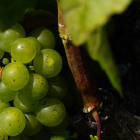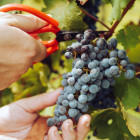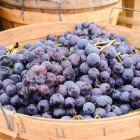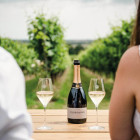For many collectors, aging wine is an important and rewarding part of the collecting process. Buying a young wine and laying it down for years to come brings a number of advantages, such as the development of complex, mature flavours, as well as that sought-after return on investment.
But not all wines have aging potential. Indeed, the vast majority of wines are designed to be opened and enjoyed relatively close to their date of purchase. And while an everyday red might have a lifespan of say, five years (or up to three for whites), keeping them stashed away for this length of time won’t have any bearing on its taste or value. Most will likely have lost their original merits by the time you get to them.
So what makes a wine age-worthy? It’s easy to conflate price or quality with aging potential, but these aren’t necessarily good indicators, nor are high critic scores. Indeed, even the most experienced collectors can sometimes have trouble determining which wines will age, and for how long. However, age-worthy wines do tend to share a number of qualities that set them apart from other wines.
- High acidity
- Structured tannins
- Balanced alcohol levels
- Complexity
- Residual sugar
- Oak barrelling
Learn more about wine characteristics here.
A wine doesn’t need to have all of these qualities to be age-worthy. Chateau d'Yquem and other producers in Sauternes, for example, make wines that are not particularly tannic but are high in acidity, and this is enough to increase the aging potential.
Equally, some wines will display many of these characteristics and are still meant to be drunk young. Sauvignon Blanc is a good example of this. This variety boasts a high acidity but is not often oak barrelled, instead designed to be crisp for enjoyment on release.
Complexity is generally a solid indicator. A wine that isn’t complex to begin with won’t become complex with age.
It’s also important to keep in mind that while it’s true that most valuable wines are age-worthy, not all age-worthy wines are valuable. Commandaria, for example, is a sweet red that can age for decades – if not centuries – but is relatively inexpensive to come by.
The second-day test
Some collectors use what’s called ‘the second-day test’ to help determine a particular wine’s aging potential, although this requires you to have more than one bottle of the wine in question (and one which you’re happy to open now).
- Open the bottle, pour a generous glass and immediately put the cork or cap back on the bottle – don’t use any pumps or preservatives.
- Taste the wine, looking for the characteristics listed above – make a note of your first impressions (learn more about making wine tasting notes here).
- A couple of hours later, pour another glass and taste again. Put the cork or cap back on the bottle (again, with no aeration or decanting) and leave it on the counter overnight.
- Taste again the next day. Most wines will have faded, but if yours still tastes good – or better – then you can generally expect it to age well for many years.
The most age-worthy wines
While every wine boasts its own unique characteristics, some varieties will age better than others. If you’re planning on laying down a few bottles, these styles are a good place to start:
Cabernet Sauvignon
Cabernet Sauvignons from cooler climates age best because the acidity is high – many of these are also aged in oak, which boosts their aging potential.
Aging potential: Up to 20+ years for quality Bordeaux.
Champagne
High in acidity, Champagne will lose its effervescence as it ages but its flavours become nuttier and creamier.
Aging potential: Up to 25+ years for legendary vintages.
Chenin Blanc
This variety is so naturally high in acidity that additional residual sugar is often used to provide balance.
Aging potential: 30+ for high quality vintages.
Nebbiolo
An extremely acidic and tannic wine that mellows with age.
Aging potential: 20+ years.
Riesling
A firm structure and sharp acidity allow some of the best Riesling to age for 100 years or more. Many also tout high residual sugar levels.
Aging potential: 20+ years.
Sangiovese
High acidity and oak aging make this one of the longest-lived wines in the world.
Aging potential: The best vintages can age for upwards of 50 years.
Sauternes
Sauternes ages so well because – like Chenin Blanc – it combines high acidity with high sugar levels.
Aging potential: 40+ years.
Syrah
Syrah has naturally high levels of tannins that evolve and become multifaceted with age.
Aging potential: 15+ years.






